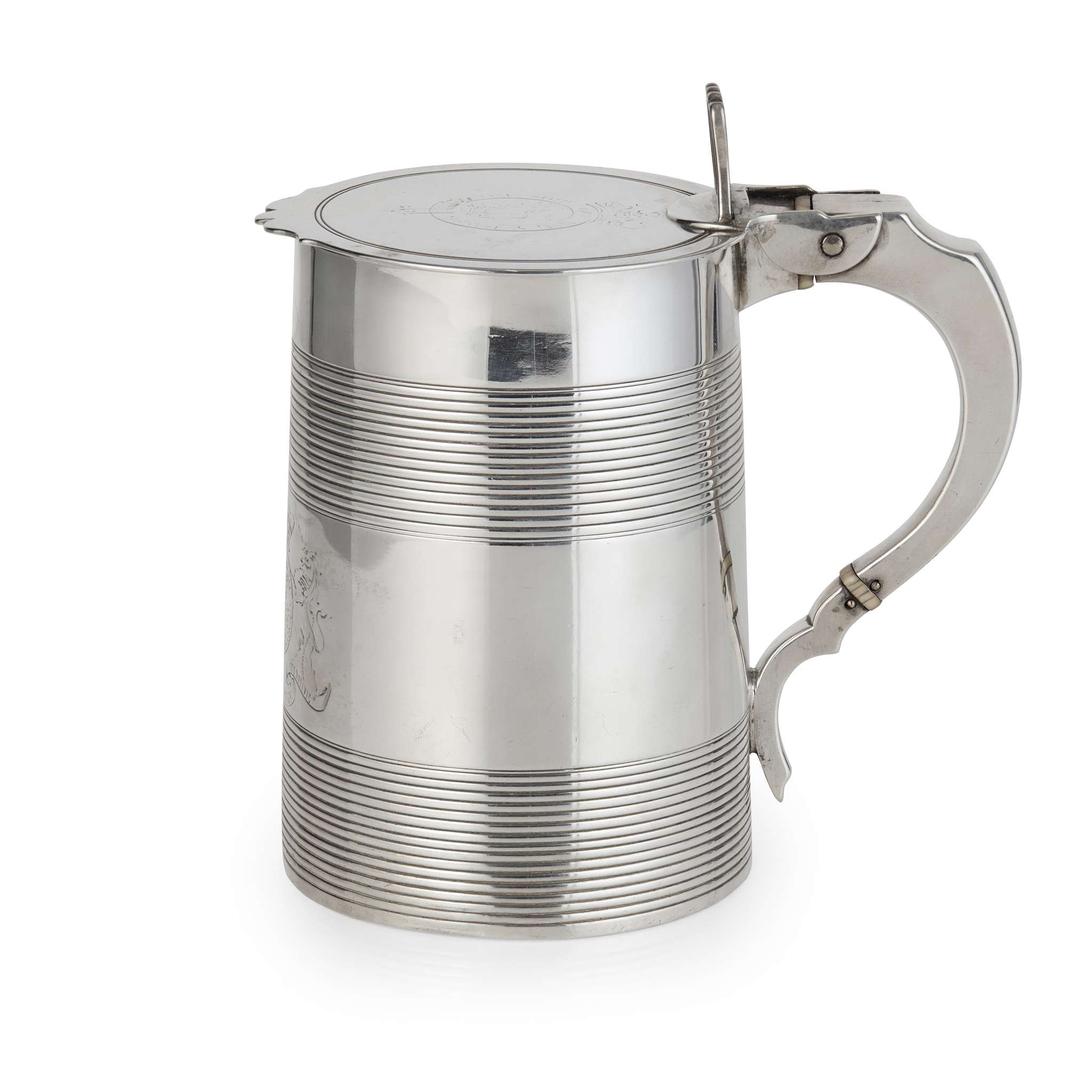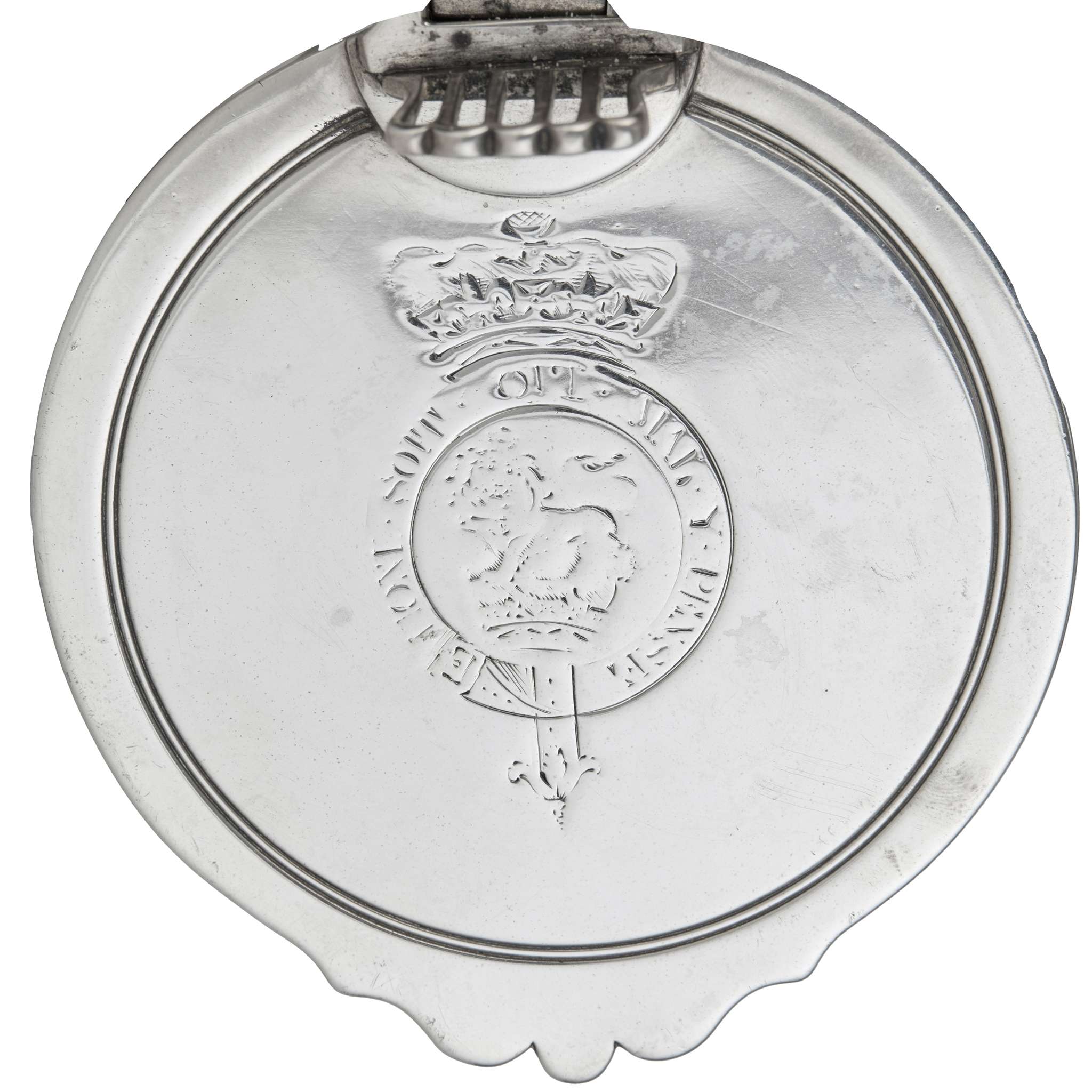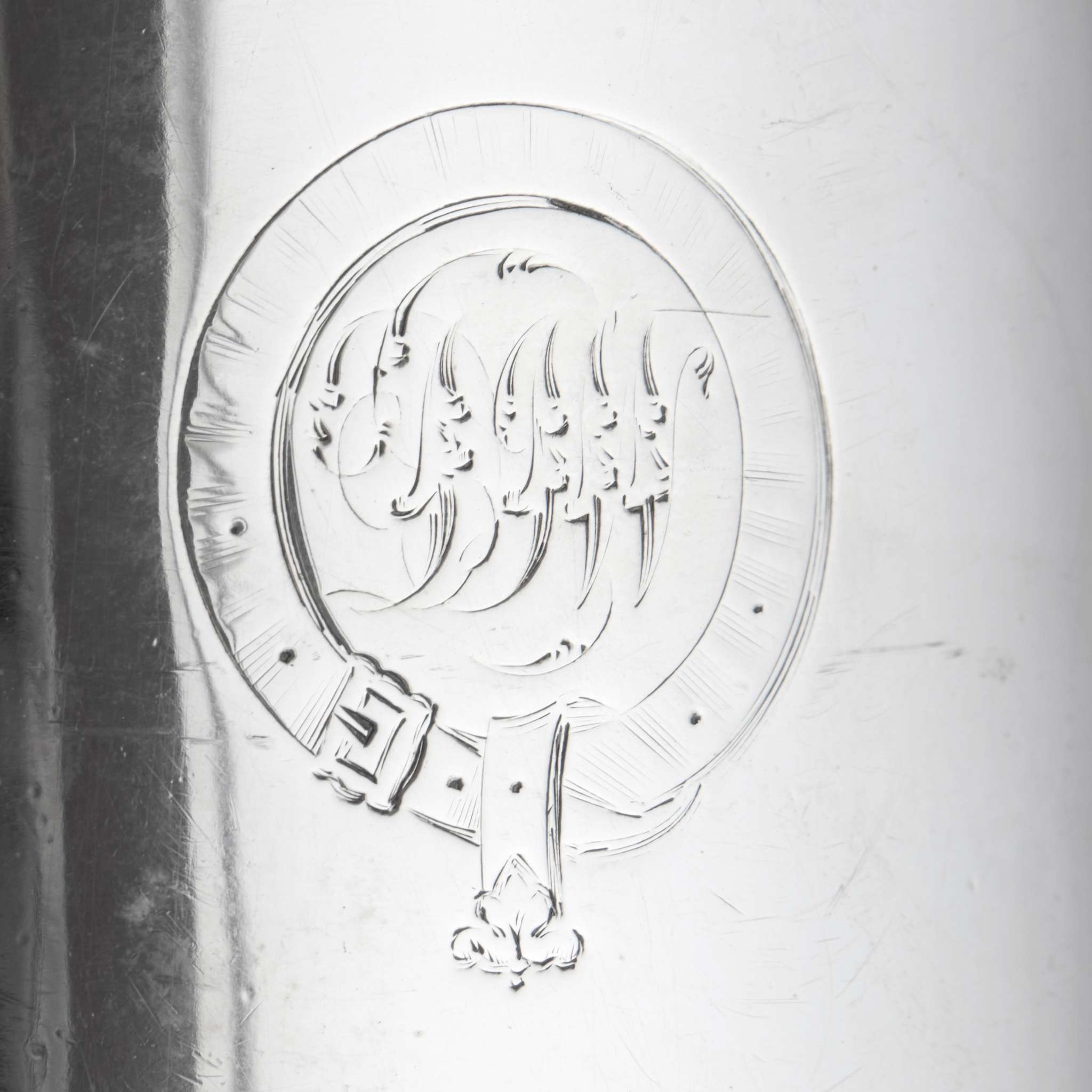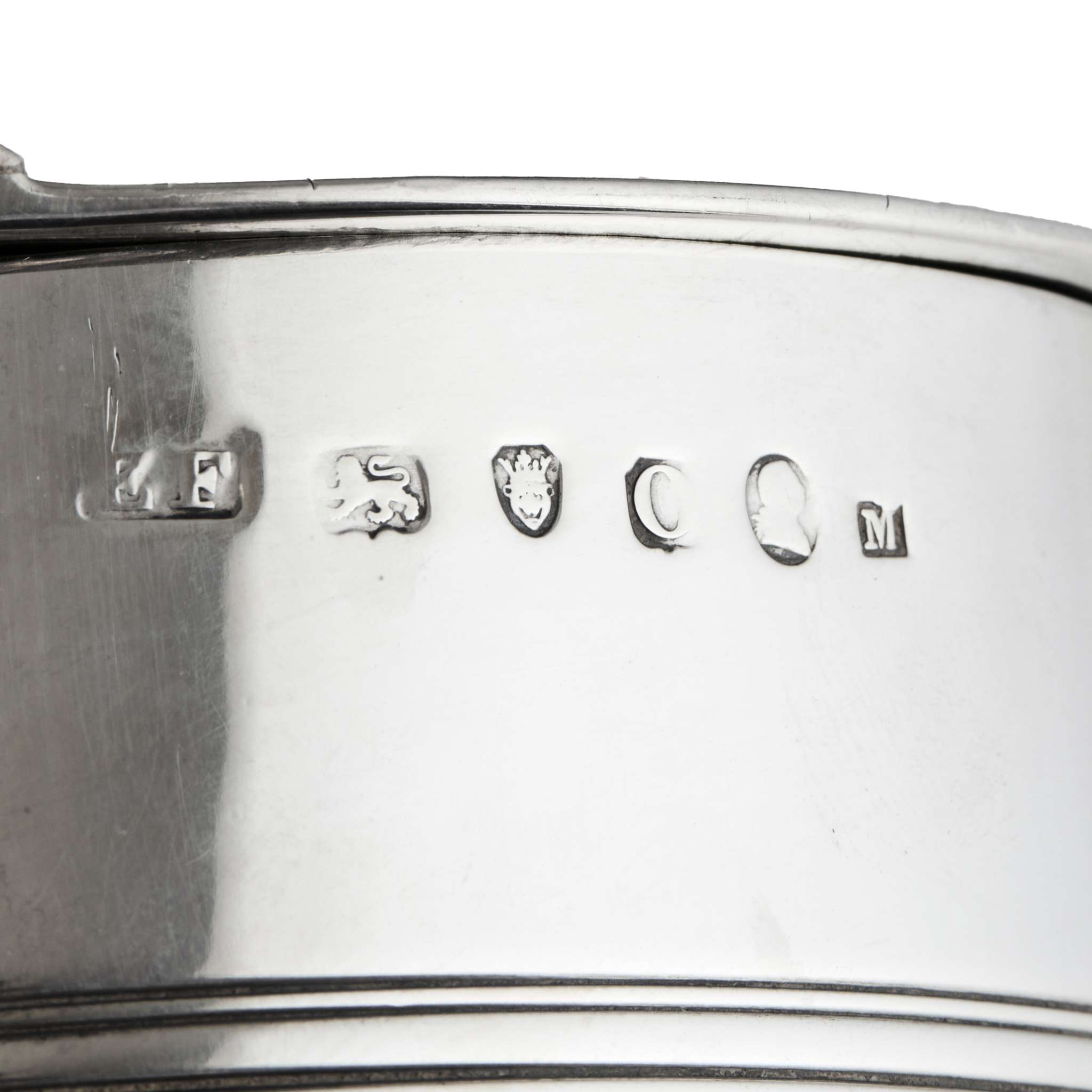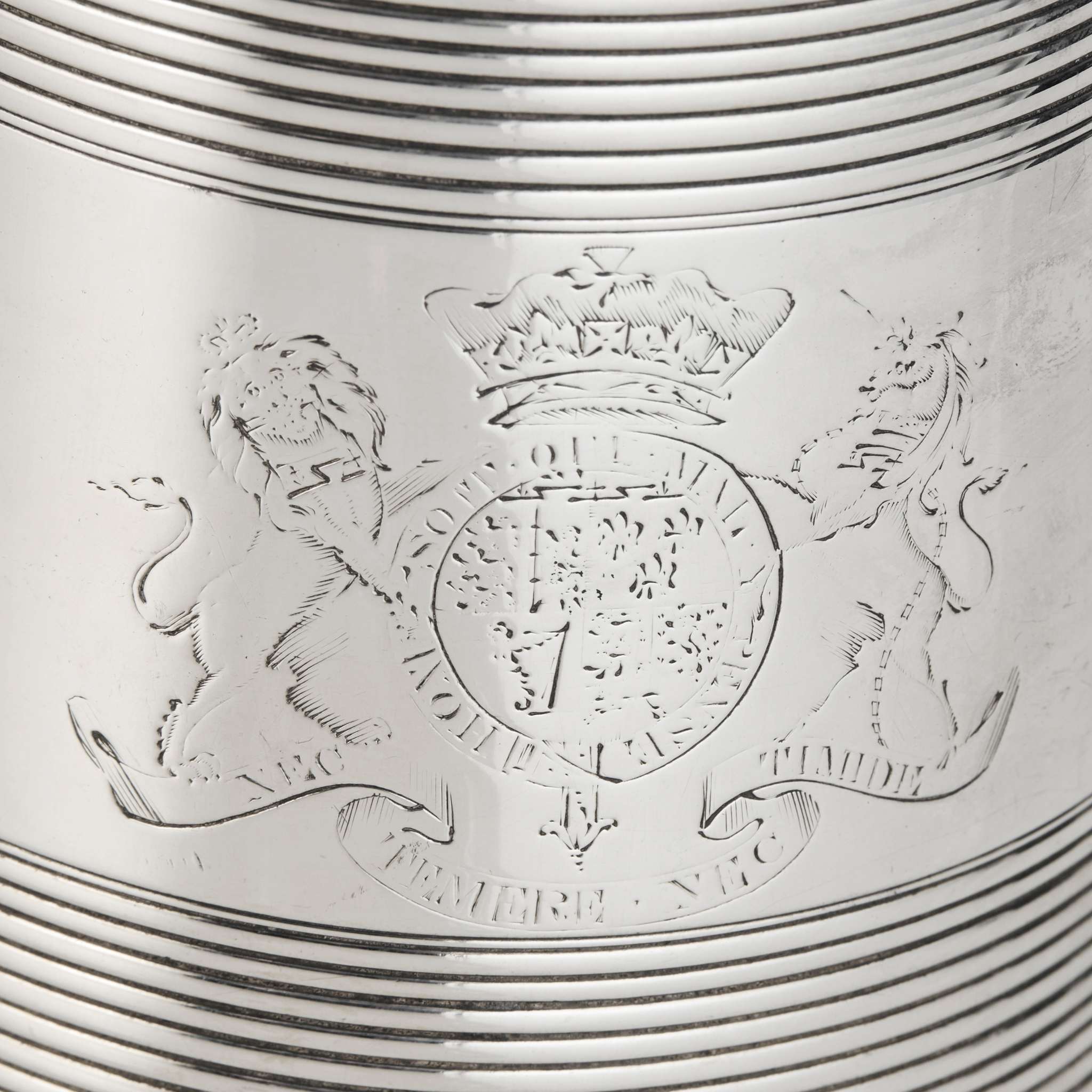205
Y THE DUKE OF CLARENCE AND ST. ANDREWS GEORGE III SILVER TANKARD
You are about to place a bid of GBP
Opening price : GBP
Bids do not include VAT, buyer’s premium or delivery.
By confirming your bid, you agree that you have read and accepted the-saleroom.com and the auctioneer's terms and conditions. Confirming your bid is a legally binding obligation to purchase and pay for the lot should your bid be successful.
Please note: you can manage your bids before the auction starts in My Saleroom. Your max bid is private and confidential.
Choose one of the quick bid options below:
Bids do not include VAT, buyer’s premium or delivery.
By confirming your bid, you agree that you have read and accepted the-saleroom.com and the auctioneer's terms and conditions. Confirming your bid is a legally binding obligation to purchase and pay for the lot should your bid be successful.
Please note: you can manage your bids before the auction starts in My Saleroom. Your max bid is private and confidential.
EDWARD FERNELL, LONDON
of slightly tapering form, with reeded decoration, engraved Royal Coat of arms and cypher within garter engraved to the body, the flat hinged cover engraved with Royal coronet above motto within garter, for HRH Prince William, Duke of Clarence and St. Andrews, later King William IV of the United Kingdom of Great Britain and Ireland and the King of Hanover, plain S-scroll handle with pierced thumb piece and ivory insulators
19cm high, 29.5oz
Edward Farrell, first entered his mark as a plateworker in 1813 as there is no evidence of an apprenticeship of freedom granted.He eventually established himself as one of the most renowned silversmiths of the Regency period, particularly in the Rococo Revival and the Revivalist style. The Revivalist style particularly focused on pieces from the past and reproducing them. A significant Monteith Gilbert.852:1, 2-2008 held in the Sir Arthur and Rosalinde Gilbert collection within the V & A museum exemplifies this, the scene on the bowl depicts an ancient battle, described as "Alexander the Great's battle of the Granicus". Hallmarked for 1820-21, this piece shows how quickly Farrell ascended and honed his craft. Farrell’s success was facilitated further due to his relationship with the retailer Kensington Lewis, who was also very interested in presenting historical items to the market. Kensington Lewis’s main patron was H.R.H Prince Frederick Augustus, Duke of York, (1763 – 1827), the brother of the Prince Regent, who would go onto become King George IV. As the spare, the Duke of York had a very successful military career and consequently was able to commission impressive pieces of silverware. The Museum of Fine Arts Boston holds two salts in their collection 1989.313, each engraved with the Royal crest with the Garter motto and surmounted by a Royal ducal coronet, for the Duke of York.The armorial bearings on this tankard were granted in 1791 to William Henry, the third son of George III and his wife, Princess Sophia Charlotte of Mecklenburg-Strelitz. He was born on the 21st August 1765 and succeeded to the throne upon the death of his eldest brother, George IV on the 26th June 1830. William was subsequently crowned at Westminster Abbey on the 8th September 1831. He died on the 20th June 1837 and was buried at Windsor. William was created Duke of Clarence and St Andrews and Earl of Munster on the 16th May 1789. He married Princess Adelaide Louise Theresa Caroline Amelia, daughter of George I, the reigning Duke of Saxe-Meiningen on the 11th July 1818. As William had no legitimate issue from this marriage, he was succeeded upon his death as Sovereign of the United Kingdom of Great Britain and Ireland by his niece, Victoria, whilst owing to Salic Law, the Kingdom of Hanover passed to Ernest Augustus, the Duke of Cumberland, the eldest surviving son of King George III.The fact that both the Duke of York and the future King William IV both were patrons of Edward Farrell is a true testament to the quality of his workmanship and the fashion of the day. Heraldry:Arms: Quarterly 1st Per pale dexter Gules three lions passant guardant or (for England) sinister Or a lion rampant within a double tressure flory counterflory gules (for Scotland) 2nd Azure three fleurs-de-lys (for France) 3rd Azure a harp or (for Ireland) 4th Tierced per pale and per chevron 1st Gules two lions passant guardant or (or Brunswick) 2nd Or semy of hearts gules a lion rampant azure (for Luneburg) and 3rd Gules a horse courant argent (for Hanover). The arms are encircled by the Garter and ensigned with the coronet of the son of Sovereign as a Prince of the United Kingdom.Supporters: (Dexter) A lion guardant or crowned with coronet of a Prince of the United Kingdom(Sinister) A unicorn argent armed unguled and crined or gorged with a coronet of a Prince of the United Kingdom and attached thereto a chain reflexed over the back also goldEach supporter is also charged with the label of three points as found on the arms under the manes of the beasts.Motto: Nec temere nec timide [Neither rashly nor timidly]This motto was also used by the Prince’s/King’s illegitimate son, the Earl of Munster (1831 creation) and the earl’s descendants.Secondary Engraving: A strap and buckle environing an unidentified monogram.Please be aware that this lot contains material which may be subject to import/export restrictions, especially outside the EU, due to CITES regulations. Please note it is the buyer's sole responsibility to obtain any relevant export or import licence. For more information visit https://www.defra.gov.uk/ahvla-en/imports-exports/cites/Sold in compliance with UK Government and APHA regulations, with (non-transferable) exemption registration reference ~
EDWARD FERNELL, LONDON
of slightly tapering form, with reeded decoration, engraved Royal Coat of arms and cypher within garter engraved to the body, the flat hinged cover engraved with Royal coronet above motto within garter, for HRH Prince William, Duke of Clarence and St. Andrews, later King William IV of the United Kingdom of Great Britain and Ireland and the King of Hanover, plain S-scroll handle with pierced thumb piece and ivory insulators
19cm high, 29.5oz
Edward Farrell, first entered his mark as a plateworker in 1813 as there is no evidence of an apprenticeship of freedom granted.He eventually established himself as one of the most renowned silversmiths of the Regency period, particularly in the Rococo Revival and the Revivalist style. The Revivalist style particularly focused on pieces from the past and reproducing them. A significant Monteith Gilbert.852:1, 2-2008 held in the Sir Arthur and Rosalinde Gilbert collection within the V & A museum exemplifies this, the scene on the bowl depicts an ancient battle, described as "Alexander the Great's battle of the Granicus". Hallmarked for 1820-21, this piece shows how quickly Farrell ascended and honed his craft. Farrell’s success was facilitated further due to his relationship with the retailer Kensington Lewis, who was also very interested in presenting historical items to the market. Kensington Lewis’s main patron was H.R.H Prince Frederick Augustus, Duke of York, (1763 – 1827), the brother of the Prince Regent, who would go onto become King George IV. As the spare, the Duke of York had a very successful military career and consequently was able to commission impressive pieces of silverware. The Museum of Fine Arts Boston holds two salts in their collection 1989.313, each engraved with the Royal crest with the Garter motto and surmounted by a Royal ducal coronet, for the Duke of York.The armorial bearings on this tankard were granted in 1791 to William Henry, the third son of George III and his wife, Princess Sophia Charlotte of Mecklenburg-Strelitz. He was born on the 21st August 1765 and succeeded to the throne upon the death of his eldest brother, George IV on the 26th June 1830. William was subsequently crowned at Westminster Abbey on the 8th September 1831. He died on the 20th June 1837 and was buried at Windsor. William was created Duke of Clarence and St Andrews and Earl of Munster on the 16th May 1789. He married Princess Adelaide Louise Theresa Caroline Amelia, daughter of George I, the reigning Duke of Saxe-Meiningen on the 11th July 1818. As William had no legitimate issue from this marriage, he was succeeded upon his death as Sovereign of the United Kingdom of Great Britain and Ireland by his niece, Victoria, whilst owing to Salic Law, the Kingdom of Hanover passed to Ernest Augustus, the Duke of Cumberland, the eldest surviving son of King George III.The fact that both the Duke of York and the future King William IV both were patrons of Edward Farrell is a true testament to the quality of his workmanship and the fashion of the day. Heraldry:Arms: Quarterly 1st Per pale dexter Gules three lions passant guardant or (for England) sinister Or a lion rampant within a double tressure flory counterflory gules (for Scotland) 2nd Azure three fleurs-de-lys (for France) 3rd Azure a harp or (for Ireland) 4th Tierced per pale and per chevron 1st Gules two lions passant guardant or (or Brunswick) 2nd Or semy of hearts gules a lion rampant azure (for Luneburg) and 3rd Gules a horse courant argent (for Hanover). The arms are encircled by the Garter and ensigned with the coronet of the son of Sovereign as a Prince of the United Kingdom.Supporters: (Dexter) A lion guardant or crowned with coronet of a Prince of the United Kingdom(Sinister) A unicorn argent armed unguled and crined or gorged with a coronet of a Prince of the United Kingdom and attached thereto a chain reflexed over the back also goldEach supporter is also charged with the label of three points as found on the arms under the manes of the beasts.Motto: Nec temere nec timide [Neither rashly nor timidly]This motto was also used by the Prince’s/King’s illegitimate son, the Earl of Munster (1831 creation) and the earl’s descendants.Secondary Engraving: A strap and buckle environing an unidentified monogram.Please be aware that this lot contains material which may be subject to import/export restrictions, especially outside the EU, due to CITES regulations. Please note it is the buyer's sole responsibility to obtain any relevant export or import licence. For more information visit https://www.defra.gov.uk/ahvla-en/imports-exports/cites/Sold in compliance with UK Government and APHA regulations, with (non-transferable) exemption registration reference ~
Five Centuries
Sale Date(s)
Venue Address
All collections are by appointment only (this applies to both carriers and personal collections).
To book or for more information contact info@lyonandturnbull.com or telephone 0131 557 8844.
-----
UK & International - Smaller items and paintings
Art & Antique Delivery Centre
Mail Boxes Etc.
12 South Bridge
Edinburgh, EH1 1DD
T: 0131 556 6226
info@mbeedinburgh.com
Mailboxes Etc
8 Shepherd Market
Mayfair
London, W1J 7JY
Tel: 0207 491 0022
info@mbemayfair.co.uk
Mailboxes Etc
61 Praed Street
London, W2 1NS
Tel: 0207 706 3666
info@mbepaddington.co.uk
Pack & Send Edinburgh East
53 Elm Row
Leith Walk
Edinburgh, EH7 4AH
Tel: 0131 201 2244
edinburgheast@packsend.co.uk
www.packsend.co.uk/edinburgheast
UK - Larger Items
Aardvark Art Services Ltd
Tel: 01253 794 673
info@aardvarkartservices.com
John McVey Distribution Storage & Transport (UK & Ireland)
175 Waddell Street
Drumchapel
Glasgow
G5 0NA
+44(0)141 429 2015
UK & International - Larger Items
Stephen Morris Shipping
Unit 15, Ockham Drive
Greenford, Middlesex
UB6 0FD
+44(0)20 8832 2222
hannah@shipsms.co.uk
Crown Fine Art
Art Central, Union Court
20-22 Union Road
London, SW4 6JP
+44 (0)20 7732 7610
auctionteam.uk@crownww.com
Constantine Moving Services (Specialists in UK & International Shipping)
Constantine House
North Caldeen Road
Coatbridge, ML5 4EF
Tel: 01236 430 681
allanak@constantinemoving.com
A Van Man Transport
Unit 5, Benridge Park
Holyrood Close, Creekmoor
Poole, Dorset, BH17 7BD
Tel: 01202 600 012
office@avmt.co.uk
Gallery Support Group
Unit 4, 89 Manor Farm Road
Wembley
London, HA0 1BA
Tel: 020 305 307 53
info@gallerysupportgroup.com
Important Information
A £6,500 spend limit has been applied to this auction. Bidders intending on spending above this amount will need to provide photo identification to have the spend limit removed. To help manage this, you will be asked to confirm your projected spend as part of the auction registration process. You may receive a request to provide photo ID. We ask that you provide this at your earliest convenience on request, to ensure you are free to bid above the £6,500 spend limit on sale day . Please note it is Lyon and Turnbull’s discretion to ask for identification – you will be also asked to provide this if you have no bidding history.
---
BUYER'S PREMIUM
The buyer shall pay the hammer price together with a premium, at the following rate, thereon.
26% up to £800,000
20% thereafter
VAT will be charged on the premium at the rate imposed by law (see our Conditions of Sale at the back of this catalogue).
ADDITIONAL VAT
† VAT at the standard rate payable on the hammer price
‡ Reduced rate of 5% import VAT payable on the hammer price
[Ω] Standard rate of import VAT on the hammer price
Lots affixed with ‡ or [Ω] symbols may be subject to further regulations upon export /import, please see Conditions of Sale for Buyers Section D.2.
No VAT is payable on the hammer price or premium for books bought at auction
REGISTRATION
All potential buyers must register prior to placing a bid. Paddle registration must be completed in advance of the sale day. Please note that all first-time, and those returning after an extended period, bidders at Lyon & Turnbull will be asked to supply the following documents in order to facilitate registration:
1 – Government issued photo ID (Passport/Driving licence)
2 – Proof of address (utility bill/bank statement).
When registering for an auction that features whisky & spirits we reserve the right to ask buyers for identification to prevent fraud, underage purchases and/or any other legal or legitimate purpose.
By registering for the sale, the buyer acknowledges that he or she has read, understood and accepted our Conditions of Sale.
REMOVAL OF PURCHASES
Responsibility for packing, shipping and insurance shall be exclusively that of the purchaser. See Collections & Storage section for more info specific to this particular auction.
CATALOGUE DESCRIPTIONS
All item descriptions, dimensions and estimates are provided for guidance only. It is the buyer’s responsibility to inspect all lots prior to bidding to ensure that the condition is to their satisfaction. Our specialists will be happy to prepare condition reports and additional images. These are for guidance only and all lots are sold ‘as found’, as per our Conditions of Sale.
IMPORT/EXPORT
Prospective buyers are advised that several countries prohibit the importation of property containing materials from endangered species, including but not limited to; rosewood, rhino horn, ivory, coral and tortoiseshell. Accordingly, prospective buyers should familiarise themselves with all relevant customs regulations prior to bidding if they intend to import lots to another country. It is the buyer’s sole responsibility to obtain any relevant export or import licence. The denial of any licence or any delay in obtaining licences shall neither justify the recession of any sale nor any delay in making full payment for the lot.
ENDANGERED SPECIES
Please be aware that lots marked with the symbol Y contain material which may be subject to CITES regulations when exporting outside Great Britain. For more information visit https://www.defra.gov.uk/ahvla-en/imports-exports/cites
Terms & Conditions
UK - Conditions Of Sale For Buyers
These Conditions of Sale and the Saleroom Notices as well as specific Catalogue terms, set out the terms on which we offer the Lots listed in this Catalogue for sale. By registering to bid and/or by bidding at auction You agree to these terms, we recommend that You read them carefully before doing so. You will find a list of definitions and a glossary at the end providing explanations for the meanings of the words and expressions used.
Special terms may be used in Catalogue descriptions of particular classes of items (Books, Jewellery, Paintings, Guns, Firearms, etc.) in which case the descriptions must be interpreted in accordance with any glossary appearing in the Catalogue. These notices and terms will also form part of our terms and conditions of sales.
In these Conditions the words “Us”, “Our”, “We” etc. refers to Lyon & Turnbull Ltd, the singular includes the plural and vice versa as appropriate. “You”, “Your” means the Buyer.
Lyon & Turnbull Ltd. acts as agent for the Seller. On occasion where Lyon & Turnbull Ltd. own a lot in part or full the property will be identified in the catalogue with the symbol (




















